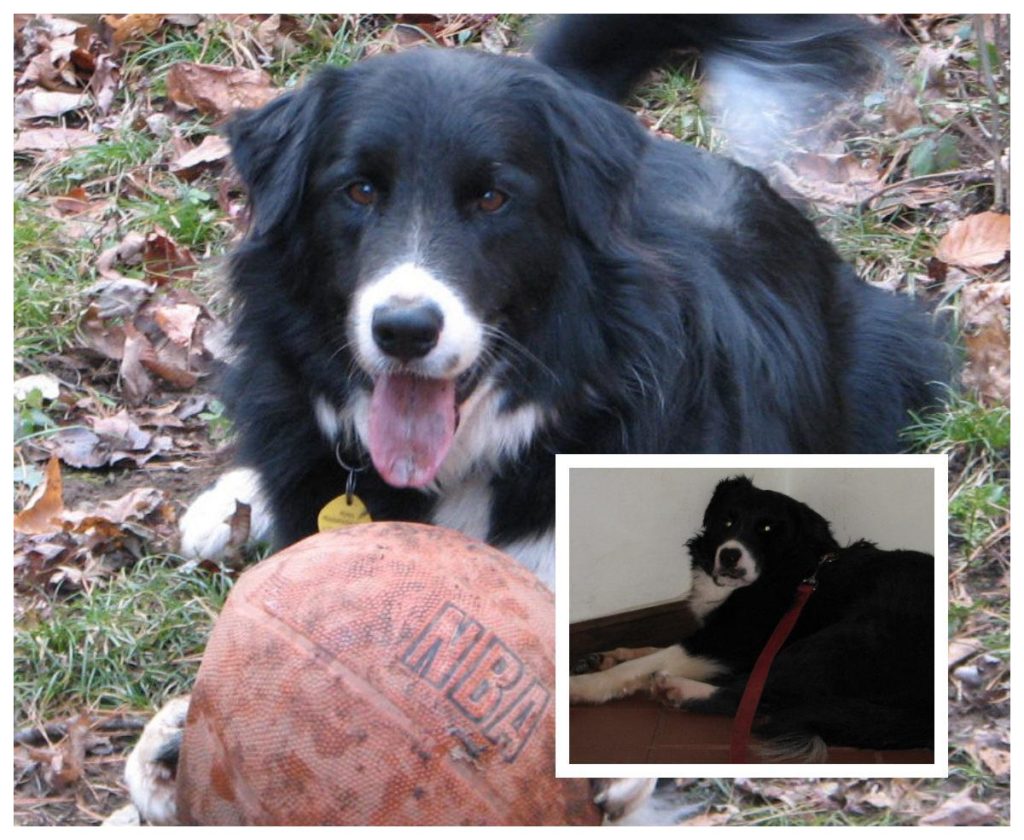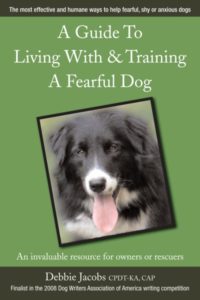Triggers are the things or situations that frighten your dog. Your dog may show varying degrees of fear including dilated pupils, drooling, lowered ears, cowering, fleeing, growling or biting. If you are unsure of how a dog’s body language indicates fear, there are websites and books that can help you learn. Dogs rarely bite without warning. Typically they have gone through a series of behaviors that people do not understand or ignore, that say, “Hey, back off, I’m afraid!”
Make a list of your dog’s triggers. Perhaps your dog is afraid of men, but not women, or children but not adults. Bicycles might send your dog into a frenzy of barking or the coffee grinder makes your dog run under the table. Little dogs might not scare them but big dogs do.
Your dog may have a different threshold for each of its triggers. The threshold is the point at which your dog can no longer deal with a trigger before reacting in a negative way (with fear or aggression). For example, a dog walking across the street only makes your dog pay attention to it, but if that dog were to move toward your dog, your dog begins to growl or lunge. One new person coming into your house is ok, but if two people come in your dog runs and hides. Your dog may be able to tolerate some of its triggers in some locations but not others. In order to retrain your dog you need to manage them so they don’t need to act in a fearful way.
Understanding what your dog is afraid of and just how afraid it is, is key to beginning the process of helping your dog get over its fears. Remember, until your dog stops feeling bad, or afraid, it won’t be able to start feeling good, or unafraid. If your dog must continually deal with things that scare it, its behavior may get worse. You never want your dog to think that the only way it can protect itself is by snapping or biting. If your dog is already acting aggressively toward people or other dogs, it needs to have its exposure to these triggers controlled or eliminated and you need to manage the dog and situations it’s in closely. If your dog does not growl, snap or bite when it is afraid, it does not mean that it can cope with more than a dog that does. Some dogs shut down when overwhelmed by their fears, especially if they cannot escape them. Don’t put your dog in situations in which this occurs.

Once you know how much your dog can manage before it starts to react fearfully or aggressively (and it’s acting aggressively because it is afraid!) you can begin the process of counter conditioning and desensitizing your dog to its triggers. Your goal is to have your dog happy about encountering its triggers, rather than fearful.
DO NOT punish your dog for its fearful behavior whether it’s peeing on the floor or snarling like a mad dog. It is unlikely it will understand why it is being punished or able to learn a new behavior in that moment. It may begin to associate punishment with what it fears (”Here comes that scary child that shows up and I get-yanked by my collar, sprayed with water, shouted at or grabbed roughly, I hate them even more!”). There is a difference between controlling your dog’s behavior and changing their feelings. You want to change their feelings, not just control their behavior (of course you don’t want your dog biting anyone so you need to manage the situation before it gets to that).
When in doubt, treat your dog like a toddler scared of the clown at the circus. It doesn’t matter that the red-nosed fellow is suppose to be funny, you’d move the kid away and go buy them some cotton candy.
For easier reading and more information about living and working with a fearful dog you can purchase a copy of A Guide To Living With & Training A Fearful Dog. For an even more complete understanding of how to help fearful dogs consider this online course.
Keep reading.
